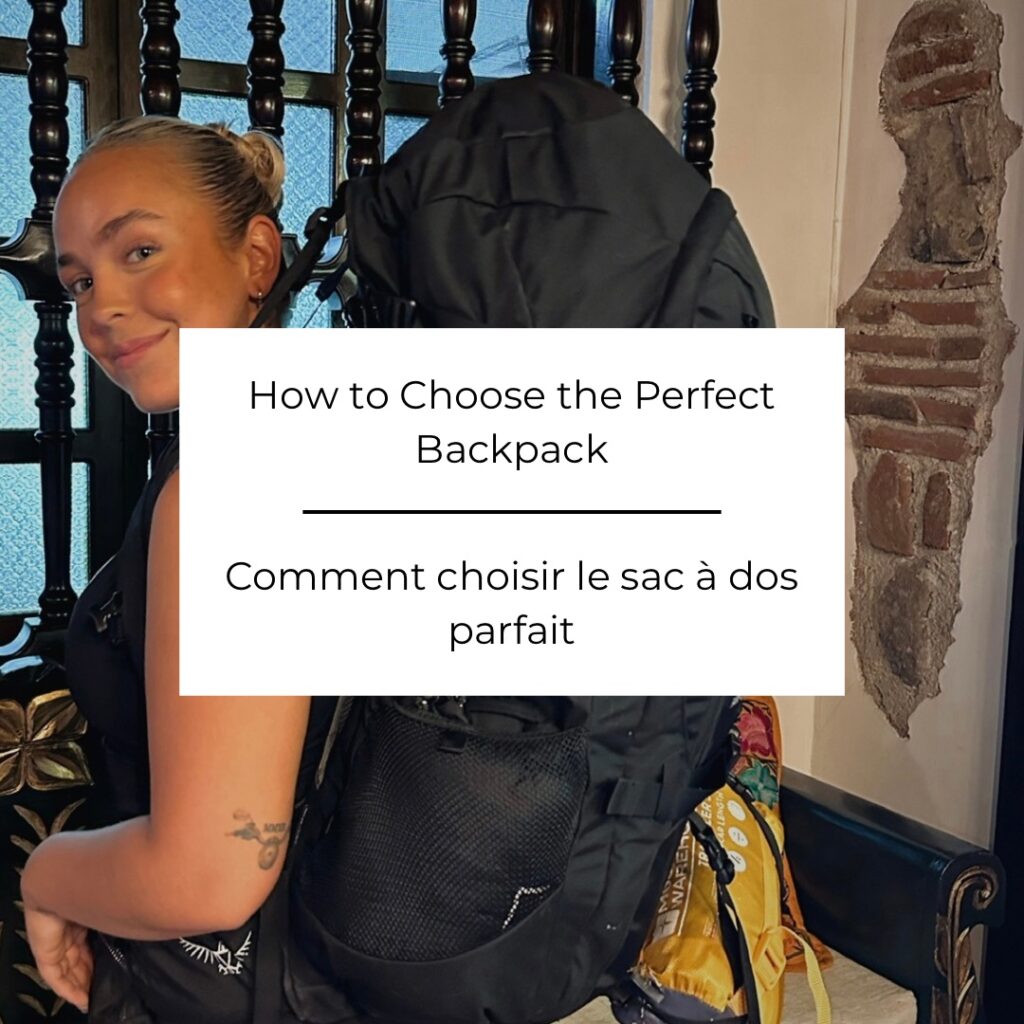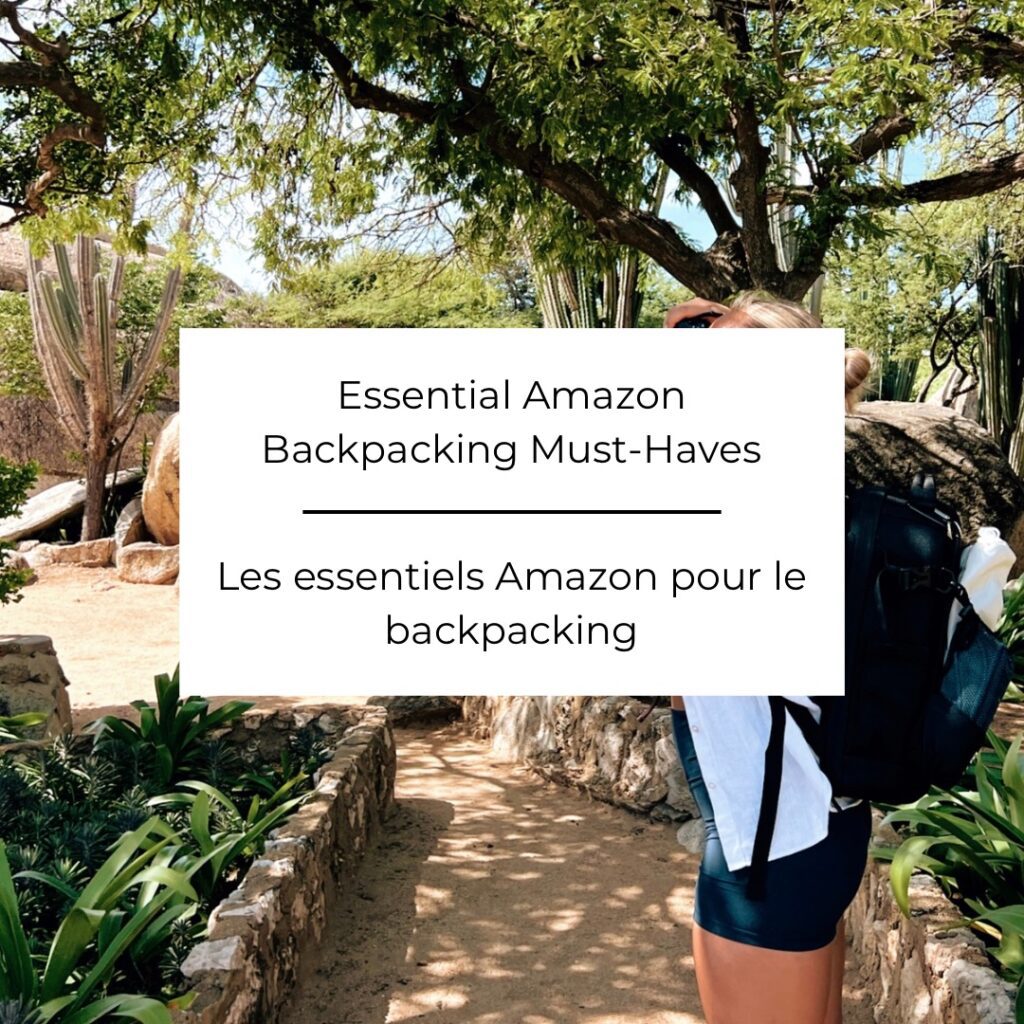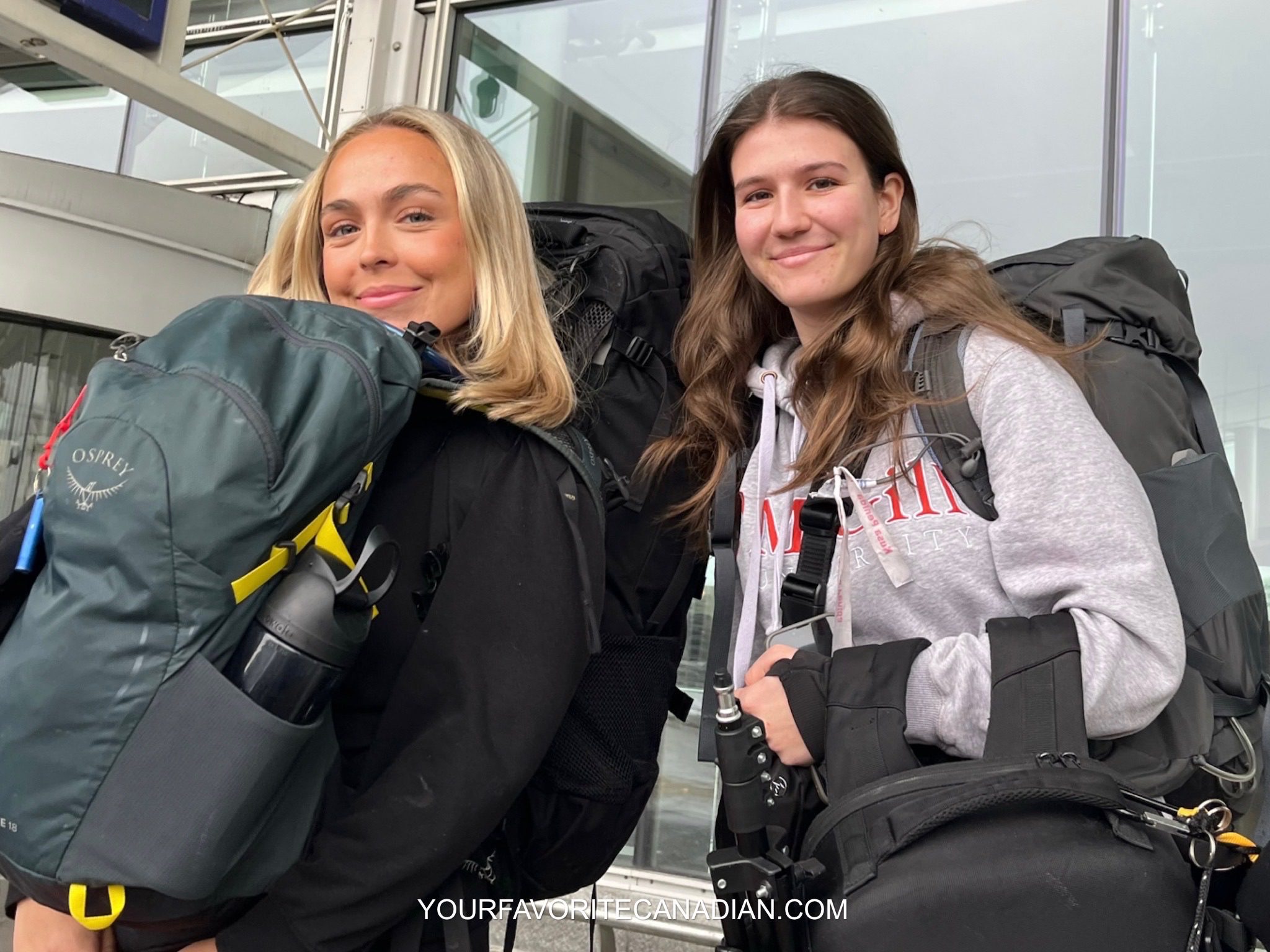When planning a trip, one of the key decisions travelers face is choosing between a checked bag and a carry-on backpack. Your choice can significantly affect your travel experience, from ease of movement through the airport to how much you’re able to pack. There’s no one-size-fits-all answer, and that’s evident in how travelers like Léonie and I (Jezabel) approach our trips with different strategies. To help you make an informed decision, here’s an in-depth look at the pros and cons of each option, as well as what factors you should consider when choosing which is best for you.
Carry-On Backpack
Pros
Stress-Free Travel: One of the biggest advantages of a carry-on backpack is peace of mind. If you’re the type of traveler who worries about whether your checked luggage will make it to your destination, carrying your bag on board eliminates that stress. There’s no anxiety over lost or delayed luggage—you’ll know that your belongings are right there with you.
Faster Airport Arrivals & Departures: Having only a carry-on means you can skip the wait at baggage claim and breeze through customs without delay. This is especially beneficial for shorter trips, where every moment counts, or when you’re trying to catch a connecting flight. Not having to wait for luggage can save up to an hour or more, giving you a head start on your travel plans.
Cost Savings: Airlines have become increasingly strict about charging for checked bags, with fees ranging from $30 to $60 CAD per flight. These costs can add up quickly, especially on multi-leg trips. Packing efficiently into a carry-on can save you money and allow you to allocate those savings toward more enjoyable parts of your trip, like dining and activities.
Mobility and Convenience: Navigating crowded airports, busy train stations, and bustling streets becomes easier when you’re carrying a compact bag. You can move more freely and don’t have to worry about dragging a heavy suitcase behind you, especially on uneven surfaces or up flights of stairs. This is especially useful for solo travelers who don’t have a travel companion to help with luggage.
Cons
Limited Packing Space: The biggest downside to a carry-on is its limited capacity. Travelers must prioritize what to pack and often have to make tough decisions about what to leave behind. This is particularly challenging for trips that require bulky items like winter jackets or hiking boots. If you’re traveling for an extended period or need specialized gear, fitting everything into a carry-on can be difficult.
Long Layovers Are Tough: While carry-on bags offer convenience, they can become a burden during long layovers. Having to carry your backpack with you everywhere means even a quick bathroom break requires you to bring all your belongings. This can be tiring, especially when you’re already dealing with the exhaustion of air travel.
No Room for Large Souvenirs: If you love to bring back unique souvenirs or gifts, a carry-on will limit your options. While smaller items like trinkets and clothing can usually be squeezed into your bag, larger items like artwork, pottery, or bottles of wine may be difficult or impossible to transport.
Risk of Forced Check-In: If your carry-on exceeds the airline’s size or weight restrictions, you may be forced to check it at the gate. While Léonie has never had to unexpectedly check her carry-on, it’s still essential to double-check the size (usually 22x14x9 inches) and weight limits of your airline before flying. Some airlines, particularly budget carriers, are strict about these requirements. However, a bag that looks compact is often given a pass and not weighed, but it’s not a guarantee.
Stay connected! Follow us on social media for exclusive content & updates on our travels.



On our website, you’ll find all the essential information and tips, while on our social media, you’ll get even more – including personal experiences, funny moments, stunning videos, and much more!
Checked Bag
Pros
No Stress at Check-In: A checked bag takes away the pressure of meeting the strict carry-on size and weight restrictions. This is particularly useful if you’re traveling with a larger backpack or suitcase and don’t want to worry about cramming your belongings into a smaller space. For travelers who like to pack a wider variety of clothing or bring items like snorkel gear or extra shoes, a checked bag is the way to go.
Easier Packing: With a checked bag, you have the luxury of more space, which allows you to pack more clothing and essentials without compromise. This means you can prepare for a wider range of activities and weather conditions without feeling limited. Plus, having more room makes it easier to keep your belongings organized and accessible throughout your trip.
Reduced Risk of Lost Luggage: Although the idea of lost luggage can be daunting, the risk has significantly decreased in recent years. According to SITA Baggage Reports, incidents of lost luggage have dropped by 70% over the last decade due to improvements in airline technology and tracking systems. This makes checking a bag less risky than it once was, giving travelers more peace of mind.
Comfortable Long Layovers: With a checked bag, you only need to carry a small personal item, like a purse or daypack, through the airport. This makes navigating long layovers or busy airports much more comfortable. You can move around freely, grab a meal, or relax without the weight of a full-sized backpack on your shoulders.
Cons
Additional Fees: Most airlines now charge separately for checked baggage, with fees that can quickly add up if you’re hopping between multiple destinations. This is an important factor to consider if you’re traveling on a budget. Be sure to calculate the total cost of checked luggage when comparing flight prices to ensure it fits within your budget.
Risk of Damage: Checked bags are more prone to damage during handling, especially if they are made of soft materials. For example, on my first backpacking trip, a buckle on my bag broke after it got caught on something, rendering the hip support useless and making the trip far less comfortable. Investing in a high-quality, durable bag can help minimize this risk but won’t eliminate it entirely.
What’s Next?
Now that you know if a checked or a carry-on backpack is better for you, it’s time to plan your trip! Here are some articles that could be helpful :



Don’t want to miss out on our latest articles? Be sure to subscribe to our website, and you’ll receive a notification every time we publish something new!
